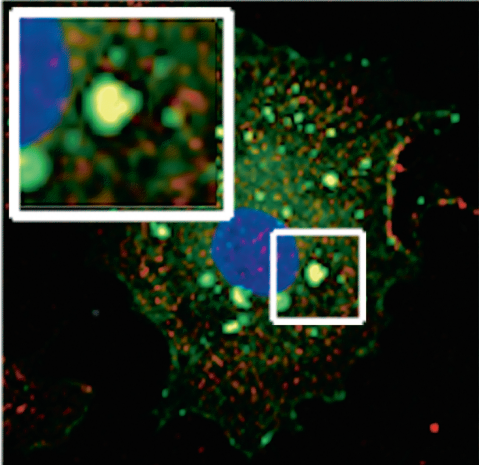Like little parasites, they attach themselves
on the body's cells, overturns theirs
genetic material into the cell and begins
to multiply and spread. The infection
is underway. Only when the cell detects the virus,
the entire machinery of the immune system is sent for, and the fight against the virus can go ahead
in progress. But researchers from Aarhus University
have just discovered that cells actually detect
virus attacks earlier than you have so far
known
"Until now, the focus has been on the immune system being alerted when foreign
genetic material enters the cell. But we
has found that the alarm is starting
previous. Already when the virus breaks through
surface of the cell, it is recognized,'
says postdoc Christian Holm from the Institute
for Biomedicine, who in collaboration with Professor Søren Riis Paludan is behind the discovery.
He compares the cell and the virus
respectively a large and a small soap bubble.
When they meet each other, they merge
to one. The merger is the first step
in the attack of the virus. But it is not in itself
dangerous before the virus has sent its genetic material
into the cell.
Therefore, the recognition sets in the surface
nor does the entire immune system:
"The fusion alerts the cell,
so it is put on high alert and on it
way is ready to better recognize viruses,'
says Christian Holm. Because the body is not
interested in activating the immune system,
unless there is a real threat, explains
he: "The immune system's tactics are in full force
simplicity to carpet bomb the entire area. With
a carpet bombing ensures that the enemy
are eradicated, but you also destroy the landscape, that is, our own fabric. Then this one
in other words, the outpost, which detects that a fusion has occurred, alerts the cell
about a threat. Then it is the task of the cell itself to
confirm whether it is a virus attack.'
The OUTPOST's warning is sent back
to the cell, where it gets it, among other things
important signaling molecule STING to
gather with other components and form
signaling complexes. These complexes are
important because they are at the same moment foreign
genetic material is tracked inside the cell is ready to
react and send messages for the immune system.
At the same time, the outpost also causes the cell to
secrete another signaling substance, type 1 interferon.
Interferon partly works back on the cell itself and
partly on neighboring cells, where it causes the cells to
start a series of antiviral programs that
making it harder for viruses to make new virus particles
